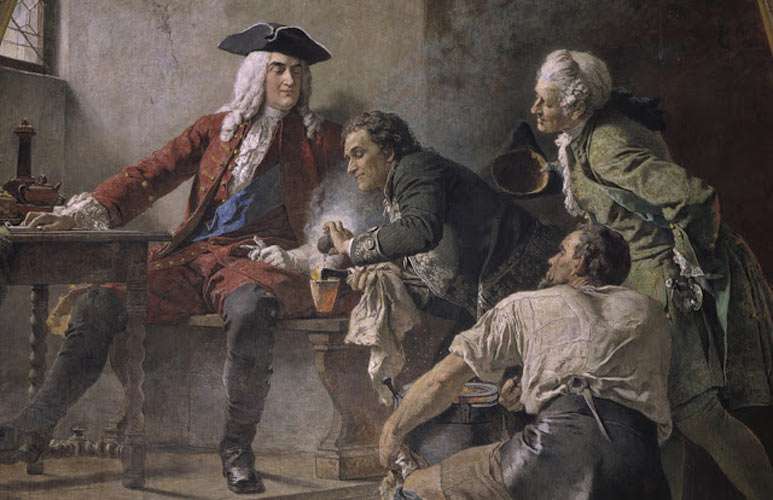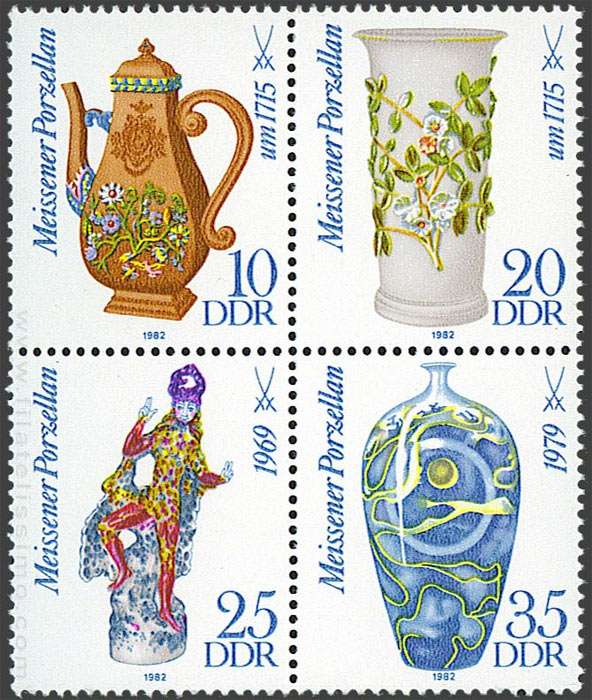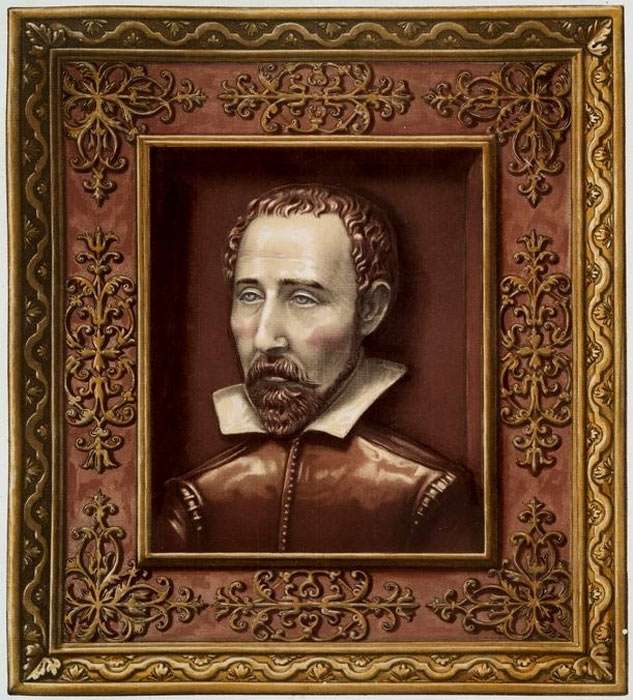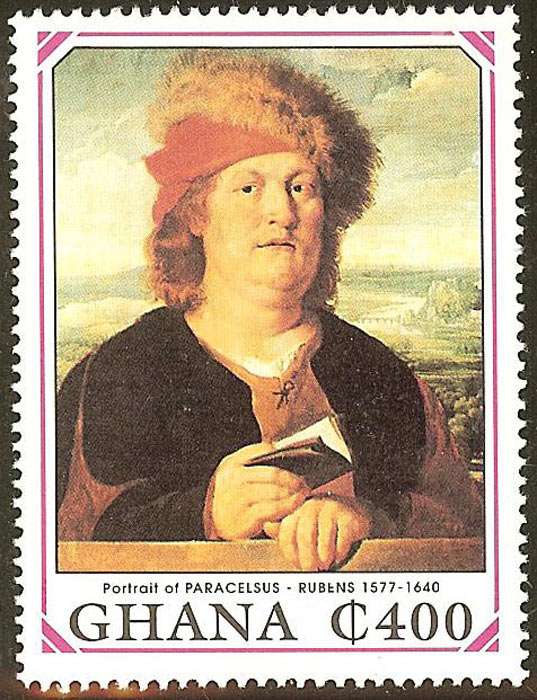|
Post stamps might seem mundane, but they are
interesting from different perspectives. For example, the designs and the
subjects they are based on, and that the postal services employ artists
to create drawings and paintings for post stamps. We don't find many post stamps about
alchemy, probably because governments tend to shy away from taking
alchemy seriously. They do commemorate historical alchemists
who became famous for the scientific discoveries that they made. Most alchemists were
also chemists or pharmacists who were knowledgeable about various sciences. This sometimes led to a product that became commercially
successful. Thus what we find portrayed in post stamps are those
alchemists/chemists who are also a national pride.
Aside from looking to the artistic side in the design of
these post stamps, it also gives us the opportunity to learn a little
more about these famous alchemists.
Contents:
Jan Baptist
van Helmont
Johann Friedrich Böttger
Bernard Palissy
Paracelsus
Johann
Wolfgang von Goethe
Arabic Alchemists
Avicenna
Jabir ibn Hayyan
Muhammad ibn Zakariya al-Razi
................................
Jan Baptist
van Helmont
Jan Baptist van Helmont (1580–1644) was an Flemish alchemist and
physician from Brussels, Belgium. He introduction of the word "gas"
(from the Greek word chaos) into the vocabulary of science. He
was a disciple of the alchemist Paracelsus. Van Helmont viewed
medical alchemy as the only key to curing all diseases and poisons. He
believed in the existence of a universal solvent, Alkahest,
that could extract medical essences out of any being. The Alkahest could
then be used to construct an all-powerful universal medicine


Belgium, 1942, after an Engraving from "Icones
Virorum" by Friedrich Roth-Scholtz (Nuremberg, 1725)
In his masterpiece Ortus medicinae (1648), Van Helmont recounted his
meeting with a mysterious Irish alchemist named Butler. Butler was in
the possession of a 'little stone', lapillus, a wondrous
alchemical medicine that could cure any disease by touching it with the
tip of one’s tongue. Van Helmont was himself given this cure, which, he
says, healed him of a slow poison given by an enemy, who had confessed his
guilt on his deathbed. As he pondered the lapillus and its contents
later on, Van Helmont compared its action with that of viper venom,
which also acted instantly and in very small quantity. Thus he envisaged
snake poison and Butler’s lapillus as polar opposites.
Van Helmont was a
keen reader of Paracelsus, and inherited his framework in regards to
poison. Paracelsus argued that all things contained poison within them,
but poison also had a medicinal side. It was a question on how to
separate the two aspects so that only the medicinal side remained. We
don't know how Paracelsus achieved this with his alchemical preparations,
but it seems similar to present-day homeopathy where the energy of a
physical substance is separated from the substance itself. Being
transferred to a liquid, it becomes a potent medicine.
Van Helmont believed that the alchemical process would obtain the
medical essence as an 'inversion' of the poison. Van Helmond said that
Paracelsus knew how to accomplish the inversion for a medicine called
antimonial tincture of lily. Yet, Van Helmont believed that
Paracelsus did not know that this could be done for all poisonous plants
and animals by using the greater circulated salt solvent, the
universal solvent Alkahest. Indeed, all things lose their poison and
acquire medical power if they are reduced to their primum ens (primal
state of being in which everything is pure and good). Ultimately, the
Alkahest can lead to the creation of the supreme universal medicine.
Johann Friedrich Böttger
Johann Friedrich Böttger (1682-1719) is credited
with discovering the secret of manufacturing European porcelain in 1708
in Germany. Böttger was an alchemist who claimed to be able to make
gold, but failed when forced to do so. Instead he discovered the
secret of making hard porcelain.
In 2010, Germany released a post stamp to commemorate the
300 year anniversary of the establishment of the Meissen factory.
On the stamp we see Johann Friedrich Böttger,
the
son of a mint master from Schleiz. He first learned the pharmacist's trade
at 18 years of age, when he tried to discover and make the philosopher's
stone or tincture that could transmute base metals in gold and provide
external life. He did this in secret, but soon acquired the reputation of an alchemical "gold maker".
In 1701, Augustus the Strong, was Elector of Saxony rescued the young Böttger, who had fled from the court of the king of Prussia, Frederick
I, who had expected that he produce the Goldmachertinktur to
create gold for him as Böttger had boasted he
could. Augustus imprisoned him and tried to force him to reveal the
secret of manufacturing gold. Böttger's transition from alchemist to
potter was orchestrated as an attempt to avoid his execution. In 1704,
impatient with no progress, the monarch ordered scientist Ehrenfried
Walther von Tschirnhaus to oversee the young gold-maker. At first
Böttger had no interest in von Tschirnhaus' own experiments, but with no
results of his own and by then fearing for his life, by September 1707,
he slowly started cooperating. Thinking the deciphering of porcelain's
secrets was his only option left to both satisfy the monarch's greed and
save his own neck, he began cooperating in earnest. Instead of making gold he tried to make porcelain. On
January 15, 1708, Johann Friedrich Böttger and von Tschirnhaus succeeded in producing the first
European hard-paste porcelain in Dresden.

The design of the post stamp is based on a painting by the
German artist Paul Kiessling (1836-1919), where Böttger is showing the
secret of the production of porcelain to the Elector:

In 1950, the Deutsche Demokratische Republik
came out with a post stamp, showing a demonstration of the first Meissen
porcelain at the Easter fair in 1710.

Below is the First Day of Issue of 2X 50 Pfennig
by the Deutsche Demokratische Republik on January 20, 1982. It
commemorates the 300th
birthday of Johann Friedrich Böttger:
The stamps show the only known portrait of Böttger, and his
seal.

The scene is an engraving of the Albrechtsburg Castle in
Meissen, where the first porcelein factory was established.

The portrait of Böttger is based on the only existent portrait
created by François Coudray in 1723. This is on a picture plaque made of
Böttger stoneware kept in the Ducal Museum of Gotha. Böttger stoneware
was a preliminary stage of true porcelain, being hard-fired, brown
stoneware into whose matte or glossy-polished surface decorations could
be cut.
In the same year, 1982, the DDR also created four stamps with Meissen
porcelain to commemorate the 300th
birthday of Johann Friedrich Böttger. They show a coffeepot of 1715, a
mug vase of 1715, a figure of Oberon of 1969, and a vase of 1979.


Right is the coffee pot, displayed in the first stamp, produced in the
Meissen factory in 1710-1730, now in the Kunstgewerbemuseum in Berlin.
The deutsche Bundespost of the German Democratic Republic also
printed a stamp in 1982 to commemorates the 300th
birthday of Johann Friedrich Böttger, showing a Meissen porcelain piece.

Bernard Palissy
Bernard Palissy (c.1510–c.1589) was a French Huguenot alchemist, potter,
hydraulics engineer and craftsman. He struggled for
sixteen years to imitate Chinese porcelain, but never succeeded. Instead
he created his own type of ceramics, his
so-called "rusticware", typically highly decorated large oval platters
featuring small animals in relief among vegetation, the animals
apparently often being molded from casts taken of dead specimens. As an
alchemist he experimented and developed different colored glazes and
enamels.
Palissy was not only practical alchemist, he was also metaphysical. As
a Paracelsian adept, he subscribed to the Neoplatonic notion of
cosmological harmony between man-microcosm and universe-macrocosm, since
the divine soul of the creator animated all creation. The adept could
anticipate the process of redemption through alchemy, the separation of
pure from impure by fire.
Originally, he made a living by painting and designing. One day, a
wealthy man in the neighborhood of Saintes showed him an earthen cup
from his collection. It was turned and enameled with so much beauty,
that, at the sight of it, Palissy artist was struck dumb with
admiration. The cup probably was Italian porcelain, because no man in
France could make white porcelain or enamels. This spurred Palissy to
search for a way to make enamels as this would provide him with a good
income.
For Palissy, the white glaze of the cup signified the astral spirit
materialized and then merged with the macrocosm in enamel. He began by
making a furnace, and having bought a quantity of earthen pots, and
broken them into fragments, he covered these with various chemical
compounds. He melted them at furnace heat. His hope was, that of all
these mixtures, some one or other might run over the pottery in such a
way as to afford him at least a hint towards the composition of white
enamel, which he had been told was the basis of all others. He labored
for several years without any success, and his family was driven into
poverty.
He experimented with many different types of colored enamels, but
could not produce the white porcelain. He then began to make his own
kind of ceramics, typical dishes ornamented with local flora and fauna
and glazed with many colors. The colored glazes were the result of his
many years of adding different metals to it. Palissy was the first to
make casts from life animals, with which he decorated his enameled
stoneware, from 1555 on. It teems with flora and fauna that he collected
by slogging through the marshes of France. They became popular and were
known as rusticware.
France issued a semi-postal (charity for the benefit of the French
Red Cross) stamp featuring a
portrait of Palissy, designed by French artist Louis-Charles Muller
(1902-1957), engraved by Raoul Serres (1881-1971), and issued
on June 15, 1957.

The post stamp is based on a self-portrait in faïence by
Bernard Palissy himself, held in from the collection of Baron Anthony de
Rothschild in London:

Paracelsus
Philippus
Aureolus Theophrastus Bombastus von Hohenheim,
better known as Paracelsus (1493–1541), was a Swiss and German alchemist
and physician. Paracelsus sought a universal knowledge that was not
found in books or faculties. For this purpose he traveled all over
Europe. Based on the hermetic idea of Universal Harmony, Paracelsus saw
health and disease as a result of harmony or disharmony in the body.
Disharmony could be cured by (alchemical, or spagyric) medicines.
Early on, he created innumerable enemies by his bold nature and his
innovations, but the value of his mineral medicines was proved by the
cures which he performed. These cures only increased the hatred of his
persecutors, and Paracelsus with characteristic defiance invited the
faculty to a lecture, in which he promised to teach the greatest secret
in medicine. He began by uncovering a dish which contained excrement.
The doctors, indignant at the insult, departed precipitately, Paracelsus
shouting after them: "If you will not hear the mysteries of putrefactive
fermentation, you are unworthy of the name of physicians."
Paracelsus believed that the principles Sulfur, Mercury, and Salt
contained the poisons contributing to all diseases. He saw each disease
as having three separate cures depending on how it was afflicted.
Paracelsus theorized that materials which are poisonous in large doses
may be curative in small doses, which is reminiscent of the later
development of homeopathy by Hahnemann. Overall, Paracelsus' ideas were
quite complex, and not always easy to understand. Being a physician, he
came up with several medical discoveries and highly specific medicines.
Paracelsus came up with many prescriptions and concoctions on his own,
especially for infectious diseases, and the then spreading Black Plague.
He also said that "In all things there is a poison, and there is nothing
without a poison. It depends only upon the dose whether a poison is
poison or not..." He was the first to discover that a poison can be
medicinal in very small doses; or a medicine can be poisonous in large
doses.
Paracelsus proposed that the state of a person's psyche could cure and
cause disease, what we now know as psychosomatic illness.

Hungary, 1989
János Kass (1927- ) made this quincentennial
etching of Paracelsus, in 1993. This Hungarian
postage stamp commemorates the 500th anniversary of the birth of
Paracelsus. In this portrait the Hungarian artist emphasizes three
traits of the many-sided Paracelsus: the philosopher, the
pioneer of iatrochemistry (chemical medicine), and the alchemist. In fact, these were the
main aspects that determined the work and writings of Paracelsus as a
physician, a surgeon, and as ethicist as well. This etching is one of
the few recent depictions of the Swiss Renaissance polymath: most of the
approximately three hundred different variants of Paracelsus portraits
were created earlier, in the 16th to the 19th centuries.

Social welfare stamp series 1949

450th
Anniversary of Paracelsus, Austria
The two stamps above are after a woodcut by A. Hirschvogel, 1540:


This stamp was issued in Germany on 10 November
1993 to celebrate the 500th
anniversary of Paracelsus’s birth. The stamp features his likeness,
based on a 1538 etching attributed to Augustin Hirschvogel, a German
artist and mathematician known primarily for his etchings. In addition,
the stamp displays (clockwise, starting from the lower left corner) the
alchemical symbols of iron, air, silver, mercury, sulfur, salt, potash,
and tin, all essential tools in the alchemists’ armamentarium.
Interestingly, some of these symbols were also associated with celestial
bodies known at the time, such as Mars (iron), the Moon (silver), and
Jupiter (tin).


Switzerland, 1993; also based on the same
1538 woodcut by Hirschvogel, see below:
![Aureolus Theophrastus Bombastus von Hohenheim [Paracelsus]. Woodcut by A. Hirschvogel, 1538](media/poststamps/poststamps18b.jpg)

Ghana, 1990
This stamp was part of a series commemorating the 350th
anniversary of Peter Paul Rubens's death.
The image is after a portrait of Paracelsus painted by Peter Paul Rubens
(1577-1640), made in 1678-18, now displayed in Room 52 (Rubens Room) of
the Musées Royaux des Beaux-Arts de Belgique in Brussels:

Johann
Wolfgang von Goethe
The Deutsche Bundespost printed an interesting alchemical post
stamp in 1979, showing Johannes Faust with a Homunculus in a glass vessel,
and Mephistopheles
holding up a mirror in which Faust sees the image of a woman, which
awakens within him a strong erotic desire. It is symbolic for the
ordinary man who is driven by his primitive, animal desires. At his feet
is a magic circle used to conjure up Mephistopheles.

The homunculus first appears by name in alchemical writings
attributed to Paracelsus in his De natura rerum (1537). The
homunculus continued to appear in alchemical writings after Paracelsus'
time. It is a symbol for spiritual regeneration.
Faust is based on a German legend, where the erudite Faust is highly
successful yet dissatisfied with his life, which leads him to make a
blood contract with Mephistopheles at a crossroads, exchanging his soul for unlimited
knowledge and worldly pleasures. The legend is allegedly based on based
on Johann Georg Faust (c.1480–1540), a magician and alchemist probably
from Knittlingen, Württemberg.
The homunculus enters the legend with Goethe's tragic play
Faust. Johann Wolfgang von Goethe (1749-1832) is considered to be
the greatest German literary figure.
Faust is considered to be Goethe's greatest work.
Goethe tells us that he began to study alchemy with a Fräulein von
Klettenberg in 1768, in Frankfort to recuperate from an illness. His
interest may have been awakened by a "Universal Medicine," which was
administered by an alchemist friend of von Klettenberg and to which
Goethe credited his cure. At that time he read a number of alchemical
and Hermetic texts and began practical alchemical experiments in his
alchemical laboratory in the attic of his father’s house, directed
toward healing rather than transmutation. These experiments left a
lifelong impression on him, and we know that he continued his "mystico-religious
chemical pursuits" (as he called them). Furthermore, alchemy provided
for Goethe a structure of ideas, which we recurs throughout his
scientific work as well as Faust.
In Goethe's Faust, the Homunculus was unnaturally synthesized by Faust's assistant,
Wagner, in the laboratory. He is a little flame-like man who lives in a
glass vial. Ironically, this creature, who represents the highest
achievement of Enlightenment science, is more human in his desires than
his creator. Rather than sit in a lab all day, Homunculus wants to
experience the world, to evolve, and to achieve what he calls a proper
existence. To this end, he journeys to Greece with Faust and
Mephistopheles for Classical Walpurgis Night, where he rides the
shape-shifting Proteus out into the Aegean Sea, the origin of all
natural life. In the midst of the waves, the creature learns about
nature’s laws and, with fiery passion, he shatters his vial to give his
unnatural body to the natural waters, an act of loving sacrifice that
makes him one with nature. Homunculus’s reconciliation with nature
anticipates Faust’s own reconciliation with the divine order.
There are many post stamps with the head of Goethe. Here are only two
of them: one from the Deutsche Reich 1927, and one from the Deutsche
Post 1949:


Arabic Alchemists
Arabic alchemists were well-versed in laboratory and chemical works,
for many centuries, and made several breakthrough discoveries. They also
held philosophical or hermetic ideas in regard to the substance of
matter. Some upheld the possibility of transmutation of metals, but
others did not. There have been many post stamps issued in the Arabic or
Islamic world to commemorate these alchemists. Here is a selection. Many
of these alchemists were also well versed in other scientific and
philosophical areas.
Avicenna
Ibn Sina, also known as Abu Ali Sina, often known in the West as
Avicenna (c.980–1037). Avicenna was an alchemist, but disputed the
possibility of transmutation. He wrote four works on alchemy. He was
also a Persian polymath who is regarded as one of the most significant
physicians, astronomers, thinkers and writers of the Islamic Golden Age,
and the father of early modern medicine. Avicenna was the most
influential philosopher of the pre-modern era.

Iran, 1950

Tunisia, 1980

Qatar, 1971

Republic of Mali, 1980
Jabir ibn Hayyan
He was a first century Arabic alchemist who left
a vast corpus of writings, covering a wide range of topics ranging from
cosmology, astronomy and astrology, over medicine, pharmacology, zoology
and botany, to metaphysics, logic, and grammar. He write several books
on alchemy.

Jordan, 1987

Syria in 1997

Syria, 1968: shows the World Health Organization
WHO Emblem and Abu Musa Jabir ibn Hayyan
Muhammad ibn Zakariya al-Razi
Abū Bakr Muhammad ibn Zakariyyāʾ al-Rāzī, also known by his Persian
name Rāzī and by his Latinized name Rhazes (864–925) was a Persian
alchemist, physician, and philosopher. He was widely considered one of the most
important figures in the history of medicine.

Iran, 1964 and 1968

Syria, 1968, with the World Health Organization
WHO Emblem
|

